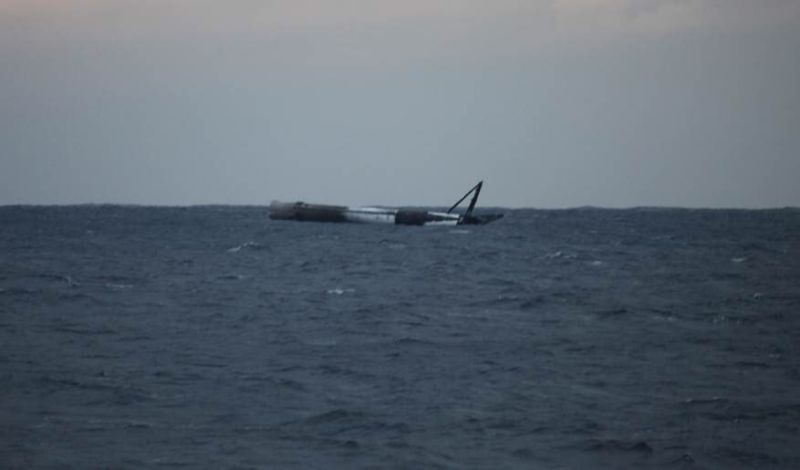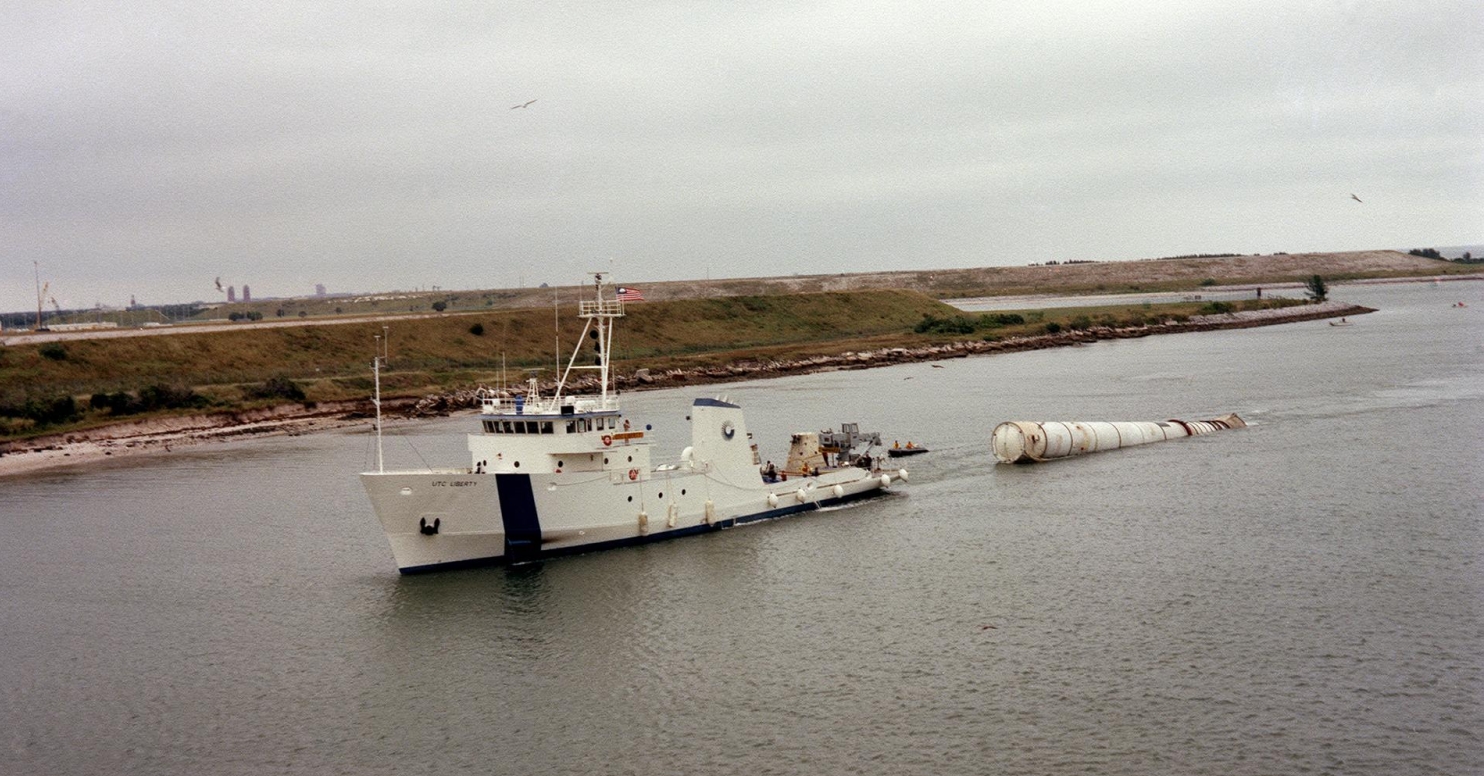
On Wednesday evening, a couple of hours after the Falcon 9 rocket had successfully deployed a satellite into geostationary transfer orbit, SpaceX founder Elon Musk shared a rather amazing photo on Twitter. "This rocket was meant to test very high retrothrust landing in water so it didn’t hurt the droneship, but amazingly it has survived," he wrote. "We will try to tow it back to shore." In other words, a rocket that SpaceX had thought would be lost after it made an experimental, high-thrust landing somehow survived after hitting the ocean.
This was amazing for a couple of reasons. First of all, when the first stage of a rocket hits water after a launch, it typically explodes. (This can be seen in some of the early water landing attempts shown in a blooper reel released by the company). A rocket should not survive impact because it will rupture the relatively thin aluminum-lithium alloy tanks that separate fuel and oxidizer. These tanks are built to withstand the axial force of a vertical launch, but not a crash into the ocean.
In this case, that did not happen. Perhaps the rocket descended such that the engines and lower end of the booster were submerged, before the 40-meter tall first stage tipped over—gently. Hopefully, at some point, SpaceX will release video from the on-board camera or other assets in the Atlantic Ocean that observed the landing on Wednesday evening.
Another reason to be surprised at the landing is the fact that the rocket performed a "three engine" landing burn. Normally, during the last part of a Falcon 9 landing, the central engine alone fires to slow the rocket for its final descent. (See, for example, here). In this case, the rocket performed what Musk called a "very high retrothrust landing," which means that three engines fired instead of one to triple the deceleration force.
This is significant because three engines firing instead of one greatly increases the force exerted on the structure of the approximately 27-ton rocket. Calculations by amateur enthusiasts on Reddit suggest that the Falcon 9 booster underwent approximately 10gs of force compared to the normal 3gs in the seconds before landing. The upside of landing with three engines is that a booster only has to fire them for a short amount of time relative to a single engine deceleration burn, and therefore it uses considerably less fuel.
It's not clear how SpaceX will attempt to tow the rocket to shore. The company's Atlantic Ocean-based drone ship, "Of Course I Still Love You," will be in service during the next week to catch the central core of the Falcon Heavy launch, tentatively scheduled for Tuesday, February 6. Perhaps the company will take a page from the playbook of NASA, which recovered the space shuttle's larger solid-rocket boosters, with tugboats.
reader comments
349